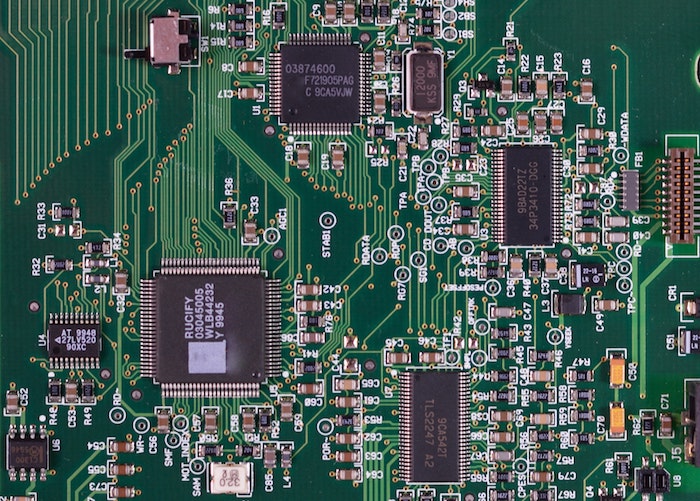An engineering career is still a
good way to make a living—but for which types of people? AAC's Technical
Director Robert Keim reflects on the nature of electrical engineering
and how it's changed as technology accelerates.

The etymology of "ingenii" according to Wiktionary. Well, if you insist.
To Create
There are two unifying concepts at the core of this discussion—whether we’re talking about the ingenious engineers of the Roman Empire or the ingenious engineers working for Bell Labs in the 1950s. The first is creation, i.e., bringing into material existence something that previously had only intellectual existence. The second is design, which is a fundamental aspect of civilization and, furthermore, a profoundly human thing—the modern suburban home is quite an improvement over the tents and clay huts used by primitive peoples, but birds have been building their nests the same way for an awfully long time.It is not difficult to perceive the existential, and reciprocal, bond between these two concepts. Design leads to creation, and creation serves as motivation for design. Will a person take the trouble to design if he or she has no hope of creating something truly new? How can something truly new be created if an intelligent agent does not design it from whatever already exists?
Engineers vs. Engineering
I think that many engineers originally pursued engineering because they had a strong interest in, or a strong aptitude for, creation and design. Certain people are intensely attracted to the process whereby an idea takes shape in the immaterial realm of the human mind and then is gradually translated into a physical reality by means of the designer’s expertise and dedication.What happens, then, when the engineering profession no longer provides engineers with sufficient opportunity to express their creativity or immerse themselves in challenging (and therefore intellectually satisfying) design tasks?
I’m certainly not implying that all engineers are drifting hopelessly away from the ideal of an ingenious person creating an ingenious device. But perhaps some of us are.
The Age of “Highly Integrated”
The increasing complexity and functional diversity of integrated circuits coincides with the extent to which traditional circuit design is confined within the walls of large semiconductor companies. Highly integrated ICs are certainly beneficial in terms of accelerating and simplifying the design process, but faster and simpler designs may not have the same ability to capture the interest and ignite the creativity of the engineer, especially when these designs sink to the level of “connect the pins” engineering.
Photo by Miguel Á. Padriñán.
- Choose the ICs (or maybe there’s only one IC, because I found something that is so highly integrated that all I need in addition to the chip are a few passives and a connector for power input and data transfer).
- Add discrete components according to the recommendations in the datasheets.
- Make connections between the ICs based on the recommendations in the datasheets, or based on previous designs.
The “connect the pins” approach to board design is highly effective from a technical standpoint, but I don’t think it’s so effective from a human standpoint.
As I asked in the title of the article: Do engineers design things anymore? Do we feel like we’re designing things? Or are we primarily following the instructions and imitating the circuits developed and published by a small group of experts?
But Someone Has to Lay Out the PCB...
I don’t see PCB layout as a solution to this issue, for two reasons.First, it doesn’t represent the core of what we learn as electrical engineers. Subtle electrical concepts are certainly involved but, in many cases, they are a minor or even negligible factor in the process of converting the schematic into a PCB.
Second, a significant amount of the work can be performed by automatic component placement and autorouting. I assume that these features are increasingly autonomous and effective, but I don’t know for sure because I never use them.
Firmware: The Last Bastion?
Maybe some of us find it easy to accept the decay of traditional circuit design because we have transferred our design energies and our desire for creative expression to the realm of firmware. Sure, we mostly follow directions and copy reference schematics when it comes to board design, but that’s because most of the action happens in firmware... right?To an extent, I think that this is true. And since the beginning of my engineering career, I have derived a great deal of satisfaction and motivation from the creativity and intricate design techniques involved in writing good firmware. But this too is changing as library code and sophisticated development tools allow us to “get the job done” even though we don’t really understand the hardware and don’t have to perform those low-level firmware tasks that are, it seems to me, a more natural extension of our expertise as circuit designers.
Your Thoughts
What do you think about this trend? Are you glad that you don’t have to worry about various complicated details, or do you miss the challenges associated with “old-fashioned” circuit design? Do you think that your current work is more or less engaging and satisfying than it was five, ten, twenty years ago? Feel free to leave a comment and let us know.







No comments:
Post a Comment